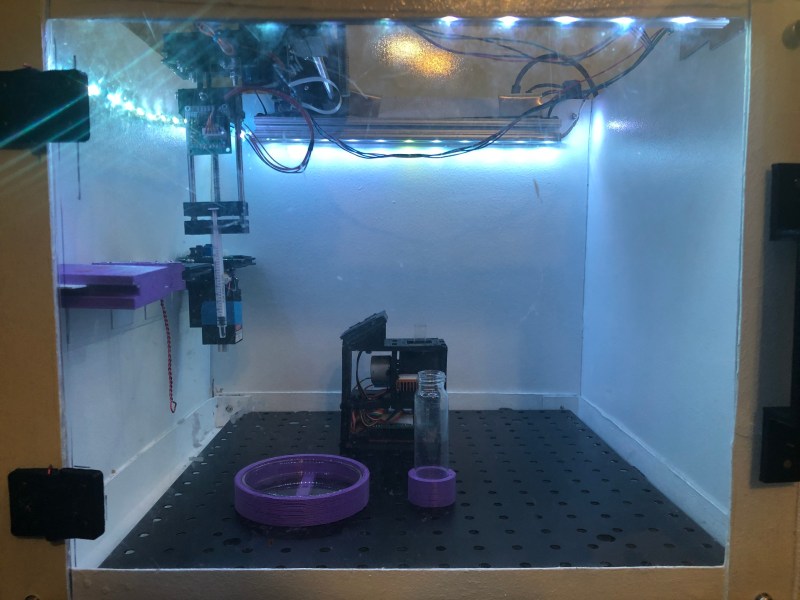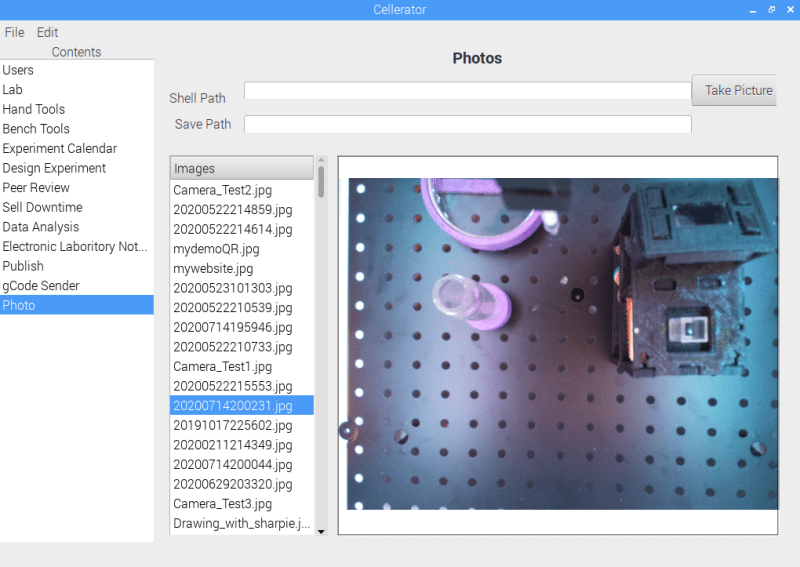Cellerator really had us at “make designer beers”, but of course this multi-purpose biotech lab has a lot more to offer. It seeks to lower the cost and complexity barriers for automating useful scientific equipment, and wants to pave the way for more innovation in material science based.
The approach taken by Cellerator is to take existing lab tools and automate common research tasks using components familiar to anyone who’s used a 3D printer. A gantry system with end effectors designed for different tools like pipettes automate the processing of samples. A camera (with or without microscope) can be used for feedback via computer vision, or simply by logging snapshots.
A number of screenshots from the software show the depth of the plans for the system. They include widgets for telling the system where various fixtures such as the hot plate, centrifuge, and bioreactor are located. Sub menus for each tool set parameters for their operation, with a scheduling and instruction system for customizing each experiment as well as recording all of the data along the way.




















What electronics do you plan to use for this? Smoothieware is the default platform for both openpnp and opentrons, both project very close to this one. If you plan on making this open-source, I can send you a free smoothieboard. You can email me for that or any other help you might need: wolf.arthur@gmail.com
I plead both ignorance and stupidity. What is this supposed to do? Does it do anything now? Are there actual schematics and source code?
Geez, biologists and electronics – what a dangerous combination. I suppose it could be worse – such as politicians and electronics.
And fritz-crap is not a schematic.
> such as politicians and electronics.
Voting machine enters the room, and cocks it’s shotgun.
We should’ve been cocking our shotguns years ago, but alas it’s too late now
It’s supposed to automate some basic procedures that need doing on precise timings or that might be risky to expose humans to directly or just because they’re monotonous. Imagine dropping 5 ml into 100 test tubes then doing it again with another liquid. Why not automate that with a gantry system and save time and mistakes?
We’re all hackers here coming from different backgrounds and with different skillsets. Hacking isn’t restricted to people with engineering degrees. I’m an English teacher but I build and hack things because it’s fun. Saying someone shouldn’t hack because they’re a biologist is like saying you shouldn’t write in English because you’re not an English teacher. We’re all students of something or you’re stagnating. Worse if you have a bad memory.
Fritzing is a tool for nonprofessionals to make clear documentation of their projects. If you don’t like the diagrams, perhaps you could offer to help out on the project and write some traditional schematics.
Mr. John said
“Saying someone shouldn’t hack because they’re a biologist is like saying you shouldn’t write in English because you’re not an English teacher. We’re all students of something or you’re stagnating. Worse if you have a bad memory.”
Lighten up Frances…. Never said such a thing. Never inferred any such thing. And for it it is worth, I am not any language teacher, but I have conducted internal design seminars and tutorials in Klingon, and and have written a CB Test Report in Latin (because the NRTL assessor was a jerk). And my memory sucks. Geez, cannot believe that I am arguing inane stuff on the internet…
Oh, and thanks for the explanation.
Do US-funded gain of function experiments in the comfort of your own home!
I was thinking making a combitorial range of yogurt cultures and see how they perform maybe? Now the performance methods and assaying the resulting brew will be more time consuming. Just an example that came to mind I was thinking about.